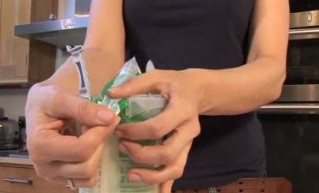The time is right for the milk bag and jug format, says Dairy Crest
Modifications to the prototype jug and bag launched in 2008 have been made and in March this year the format was rolled out across Sainsbury’s stores.
The nationwide launch has been supported by an in-store education programme to tell shoppers about the Jugit system and how it works. Sainsbury’s also organised a give-away of the containers last weekend to encourage consumers to test out them out.
Richard Pryor, innovations controller at Dairy Crest, told DairyReporter.com that the reaction has so far been really positive and sales have been ahead of forecasts.
Macro drivers
Pryor said the jug and bag has been tried before but this time around the macro drivers are in place to make it a success. He said less packaging is really attractive to both consumers and industry.
Sainsbury’s claims that the Jugit system reduces packaging waste by 75 per cent compared to the poly bottle. Pryor said this reduction helps mitigate for increased oil costs and taps in to ever-growing interest for more sustainable packaging options.
As well as reducing the amount of packaging used, the milk bags have the added benefit of being recyclable. While recycling facilities for LDPE, which is the material used for the bags, are currently not that widespread in the UK, consumers can take their bags back to Sainsbury’s stores for recycling.
When the prototype milk jug and bag was initially launched in 2008 it received a good deal of media attention, as well as some criticism. One BBC report questioned its convenience and warned of the danger of leaks.
Modifications
Working with suppliers, including packaging firm RPC Container and designers 1HQ, Dairy Crest and Sainsbury’s have since modified the system to make it more user-friendly.
Pryor said it is now easier to secure the bag in the jug and the action of closing the jug lid now punctures the bag automatically, one less step compared to the prototype. Work was also done with a European film supplier to increase the durability of the bags to prevent them being punctured in transit.
Overall, Pryor said the changes have made the Jugit system more secure and simpler to use.
While Sainsbury’s is enthusiastic about the potential of the milk bag and jug combination, rival UK supermarket Waitrose withdrew the system from its shelves before the modifications were made citing “poor demand”. Waitrose has vowed to pursue sustainability by other means such as upping recycled content in plastic bottles.








